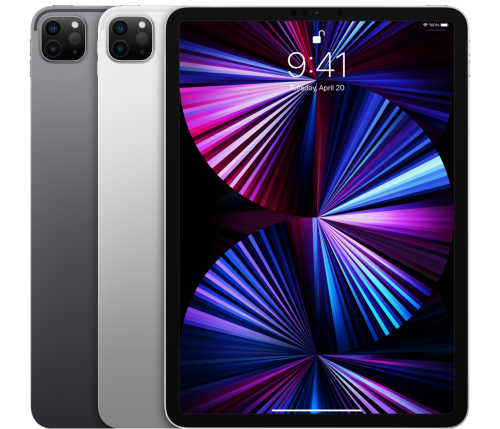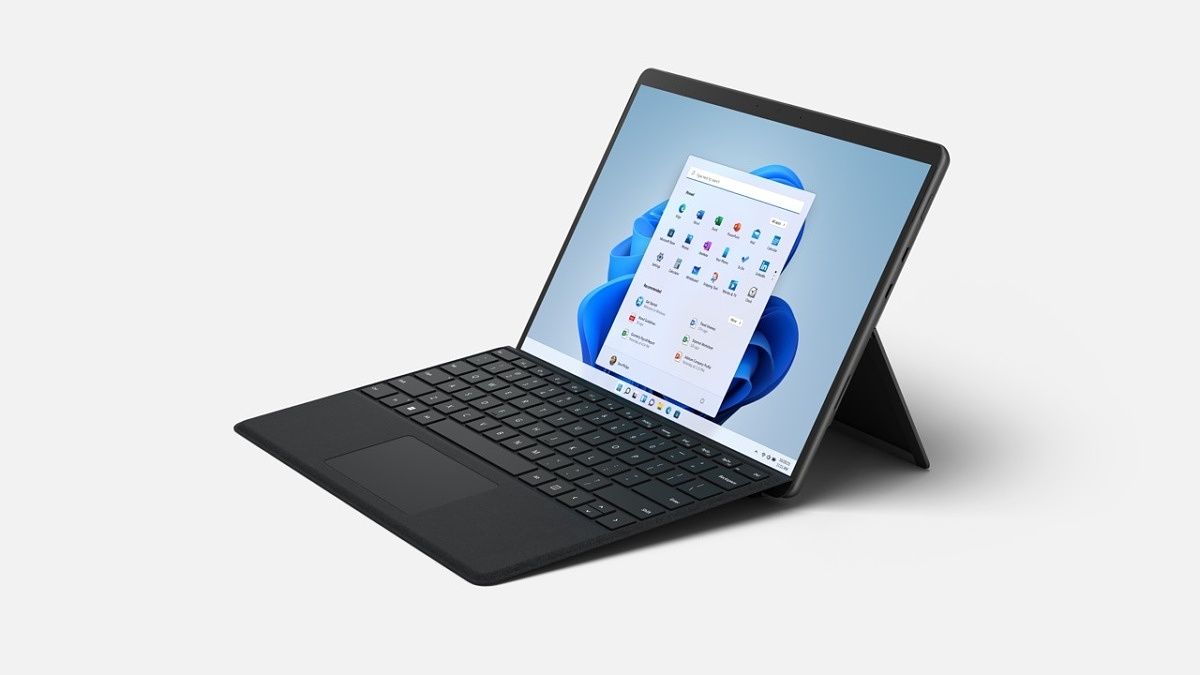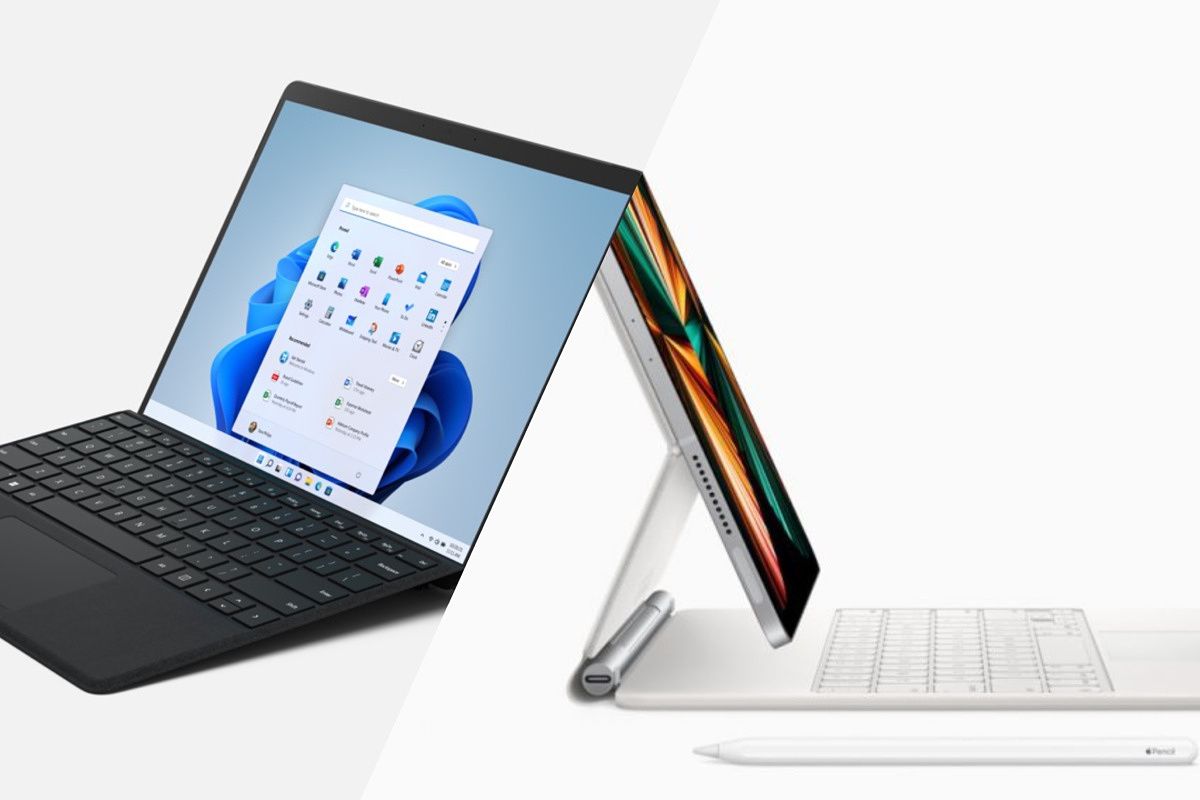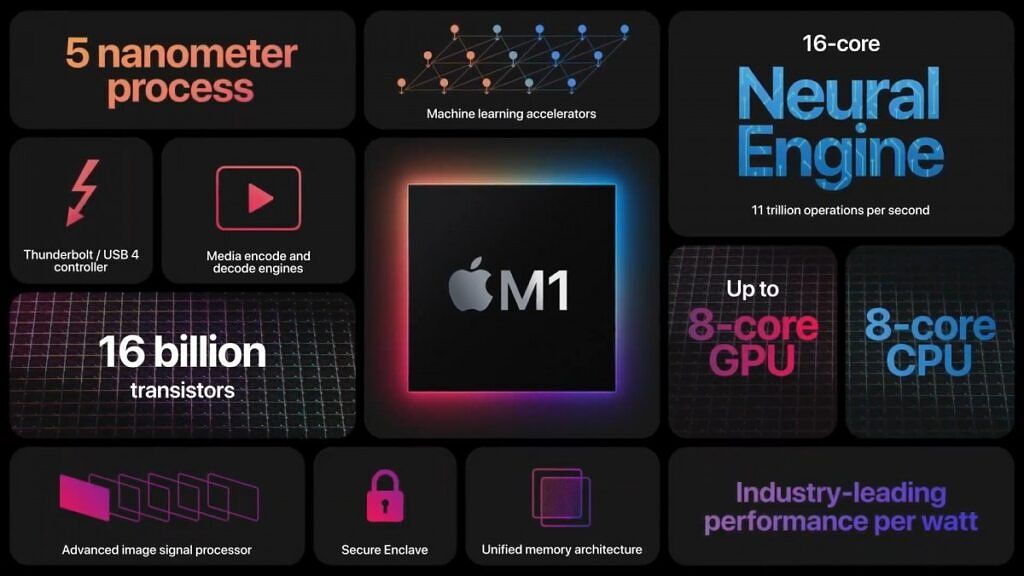Quick Links
A lot of people prefer portability to capability when it comes to choosing their devices. Usually, portable devices aren't as powerful as stationary ones. So we must achieve balance between both aspects to make the most out of two worlds. Hybrid computers are one solution to that. Microsoft and Apple offer devices for both usage cases, and the competition is only getting intenser. This is the Surface Pro 8 vs the iPad Pro M1, two portable yet exceptionally mighty devices, head-to-head.
Microsoft Surface Pro 8 vs. Apple iPad Pro M1: Specifications
| Microsoft Surface Pro 8 | Apple iPad Pro M1 | |
|---|---|---|
| CPU |
|
|
| Graphics |
|
|
| Body |
|
|
| Display |
|
|
| Ports |
|
|
| Storage |
|
|
| RAM |
|
|
| Battery |
|
|
| Audio |
|
|
| Camera |
|
|
| Connectivity |
|
|
| Color |
|
|
| Price |
|
|
Design: The Surface stands victoriously!
Body
The iPad Pro M1 features a clean, edge-to-edge design with thin bezels. It includes an upgraded Face ID TrueDepth camera that works both in portrait and landscape orientations. This feature, which is unavailable on the iPhone, lets a user comfortably unlock their iPad Pro in whichever position.
The iPad has a camera bump on the back that houses the dual camera system, flash light, LiDAR sensor, and a microphone. Otherwise, it's a slim, minimalistic slab. The 11" model is about 3.5 mm thinner than the Surface Pro 8, but it doesn't offer a kickstand.
The kickstand makes it easy to use your Microsoft Surface without any cases, keyboards, or accessories attached. You just fix it in whatever position that works for you, and it'll stay in place. To achieve a similar result on any iPad, you'd need a case or keyboard with a stand. Otherwise, you're going to have to hold your (large) iPad at all times or place it horizontally on a plain surface.
Ports
Apple has become infamous for ditching ports on iDevices. This sacrifice comes in the name of minimalism. We agree, portless devices do look sleek, but they break functionality. Dongles don't look good attached to any device, but average users are slowly shifting to alternative solutions. Depending on the cloud and going wireless is one way to do it, even though most power users would probably disagree.
The Surface offers two USB C ports, in addition to the fans' favorite — a 3.5 mm headphone jack — and Surface accessory ports. So you won't be needing as many dongles or cloud solutions if you settle for the Surface.
Conclusion
In this round, the Microsoft Surface Pro 8 wins over Apple's iPad Pro M1 in terms of functionality and ease of use (hardware-wise, not software). If you're fine with having one USB C port and no kickstand, then the clean iPad offers a modern design that's almost objectively more appealing than that of the Surface.
Display: They each glow in different ways!
The entry level iPad offers an 11" Liquid Retina display with a 2388 x 1668 resolution at 264 pixels per inch (ppi). On the other hand, the Surface has a 13" PixelSense display with a 2880 x 1920 at 267 ppi. The bezels on the iPad aren't as thick as those on the Surface, and the former has rounded corners, giving it a more gorgeous overall look.
It's worth mentioning however, that the iPad Pro 12.9" features a a Liquid Retina XDR display with a 2732 x 2048 resolution at 264 ppi. While the Surface's resolution is competitive in the Pro 8's case, it still doesn't display HDR content as gorgeously and accurately as the iPad Pro 12.9".
Accessories: This one's a tie!
When it comes to accessories, Apple and Microsoft offer similar options. Both the iPad Pro and the Surface Pro 8 support keyboard attachments and some form of smart stylus. The Apple Pencil 2nd Gen costs $129, compared to $99 for Microsoft's Surface Pen. However, Apple's supports magnetic wireless charging when placed on the iPad's edge. The Surface Pen is AAAA Battery powered on the other hand. So the extra $30 is arguably worthwhile.
Microsoft just introduced the Surface Slim Pen 2. It supports charging through the Type Cover, so it's one step closer to the Apple Pencil 2nd Gen. It's priced at $129.
As for keyboard accessories, Apple has placed a whopping $179 price tag on the Smart Keyboard Folio, while Microsoft's Type Cover only costs $99. While the Folio has a stronger build, it's still almost double the price of Microsoft's version, and it doesn't include a trackpad like that of the Surface. If you want a trackpad for your iPad Pro, then you will need to buy the Magic Keyboard, which is priced at $299. That's thrice Microsoft's price tag.
It's hard to state the winner of this round, simply because Apple includes more features (particularly when it comes to the Pencil, not the keyboard) and a better build quality. So it's only fair to charge more for that. Microsoft offers more affordable options that lack some extras, but it also includes a trackpad for a lower price. So in the end, it really depends on the user and their specific needs and budget.
Capability: Another tie!
Performance
The entry model of the Surface Pro 8 and the iPad Pro M1 both offer 8GB of RAM. But when it comes to the processors, the Apple M1 chip outperforms the Intel chips. The iPad Pro is theoretically more capable and energy-efficient, but we also have to keep in mind the software limitations.
Software
A limited operating system can paralyze one's workflow, no matter how powerful the processor is. Here's where the Surface dominates the iPad. iPadOS is just iOS in disguise — and I state this as a fan of Apple products in general. Yes, there are some iPadOS features and gimmicks that aren't available on iOS, but at its core, it's just an over-glorified mobile operating system.
I've used an iPad as a PC replacement before. A few months later, I found myself upgrading to a MacBook Air for this particular reason, even though I could theoretically do all of my work on iPadOS. The OS just isn't very capable, not to mention being limited to installing iOS/iPadOS apps.
The Surface Pro 8 runs Windows. This means you can install any (supported) Windows programs and use built-in features that you'd find on Windows PCs. It isn't yet another tablet. Considering Apple has created the M1 chip for Macs mainly, there's no doubt it's a particularly powerful chip. It's sad to see so much power wasted by the constraints of iPadOS.
Conclusion
If your job or studies revolve around drawing, reading, writing, or any other functionality that can be done through a mobile or web app, then an iPad Pro could be your "PC." But if you'd rather have a more stable OS that supports desktop apps, then the Surface Pro 8 is what you're looking for. It really depends on your needs and usage case. The iPad is theoretically faster, but iPadOS cripples it. Until Apple changes that (to the better), it'll always be a disadvantage.
We're considering this round a tie because the iPad Pro beats the Surface, performance-wise. However, the Surface runs a desktop OS, which obviously gives it this win. Ultimately, this is very personal and subjective, depending on what a user is looking for specifically. We're only laying out the facts here and highlighting strengths and weaknesses.
Finishes: They both pass this one with flying colors!
This round is short, particularly because both the Surface and the iPad Pro offer two color options each.
iPad Pro M1:
- Silver
- Space Gray
Surface Pro 8:
- Platinum
- Graphite
Both companies offer relatively similar colors, so the finish shouldn't be a major factor when you're making your purchase decision. And you could always put on a case, cover, or skin if you're into more "fun" and lively colors.
Bottom Line
The Surface Pro 8 and iPad Pro M1 are two very different devices made for different kinds of people. Despite their relatively similar "tablet" design, they each offer different features and capabilities. Which one is right for you is up to you personally. We have only made it easier for you to weigh the pros and cons before you go ahead and buy your shiny new slab!

Apple iPad Pro 11-inch (2021)
The 11-inch iPad Pro 2021 comes with Apple's M1 chip, which is still plenty powerful and most than enough for the iPad.

Microsoft Surface Pro 8
The Surface Pro 8 is Microsoft's flagship tablet, and it comes with an all-new design, a 120Hz display, Thunderbolt 4, and more.


